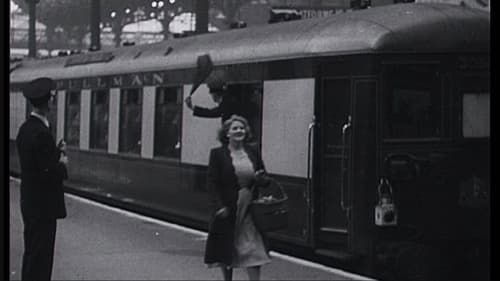The Chair (1963)
Жанр : мультфильм
Время выполнения : 5М
Директор : Daniel Szczechura
Краткое содержание
A story about the fight for power told with the help of simple graphics. The huge building, the huge column hall, one chair around the chairman's board table is empty. We observe the fight for that chair: little men run and fight, all tricks are allowed.

Man's rebellion against the world of the digits.

In a joyous tour de force, the world's greatest paintings -- all schools, all periods -- flash by at the rate of eight per second; yet we are able to recognize and retain most.

Robert Breer animation from 1969. 16mm, color, silent, using spray paint & stencils.

This scene is a part of the very first film shot produced by the Manaki Brothers. Despina, the Janaki and Milton Manaki's grandmother, was recorded weaving in one high-angle shot. For no apparent reason, the first shot made in Macedonia, in the Balkans in fact, made by these two cinematography pioneers, contains peculiar symbolics: at the moment when the grandmother Despina spins the weaving wheel, film starts rolling in our country.

This two-color (green-blue and red) film was produced as a demonstration reel at the Paragon Studios in Fort Lee, New Jersey, under the direction of Kodak scientist John Capstaff. It features leading actresses, including Mae Murray, Hope Hampton, and Mary Eaton, posing and miming for the camera to showcase the capability of the complex Kodachrome process to capture their translucent movie star complexions and colorful, high-fashion clothing. (loc.gov)

"Studie II (Hallucinationer)" (Study II (Hallucinations)) (1952), comprises twelve staged scenes that were modelled after a set of drawings. Accompanied by metallic sounds, various body parts, limbs and objects form surrealistic collages against the background of a black space. Peter Weiss intended to create associative images that can not be deciphered completely. Beyond any logical interpretation, he wanted to show pure inner feelings.

A brief scene at a sheep slaughterhouse.

A high-speed view of Paris via train-track; Zooming down the Seine by boat. Chomette's first film, Games of Reflections and Speed, traverses tunnels and elevated railways to produce a disarming rhythm.

London to Brighton in 4 minutes BBC interlude. From the days when TV was all live and programming was hectic. Often when one program finished, the next one was not ready yet, and the gap had to be filled. So the BBC developed a number of interludes to fill these gaps, this being the most famous one.

A live action footage of a smiling, bespectacled (presumably) Western tourist set against the familiar cadence of an accelerating train revving up as it leaves the station sets the mesmerizing tone for the film's abstract panoramic survey of an Ozu-esque Japanese landscape of electrical power lines, passing trains, railroad tracks, and the gentle slope of obliquely peaked, uniform rooflines as Breer distills the essential geometry of Mount Fuji into a collage of acute angles and converging (and bifurcating) lines .

It is one of the most stirring animated films in the history of animation. In a simple, but powerful way Czekala presents a horror that happened in concentration camps – prisoners’ dread, humiliation and lost humanity. The everyday roll-call ends tragically because of prisoners’ “insubordination” in this black and white film. The Roll-Call crossed borders of what can be presented or not in animation. It is sometimes interpreted as a response to the trend of allegorical and philosophical films that dominated in Polish animation in 1960s.

Footage of a bullfight, shot by Hill in 1934, hand-painted by the artist three decades later.

Study in motion based on Muybridge’s photographs of man running.

Cavalry and foot-soldiers escort President McKinley.

In this homage to Zen poet Basho, the subtle changes of a pond are chronicled on film over a period of time. Broughton recites his cuckoo haikus in the background.

A wall blocks the path of two people. One man submits, while the other refuses to admit defeat.



